|
Latest News
|

RESEARCH ARTICLE:
ENVIRONMENTAL PROTECTION
The new world atlas of artificial night sky brightness
by Fabio Falchi, Pierantonio Cinzano, Dan Duriscoe, Christopher C. M. Kyba, Christopher D. Elvidge,
Kimberly Baugh, Boris A. Portnov, Nataliya A. Rybnikova, Riccardo Furgoni
|
 |
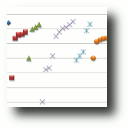 New Brunswick, Canada: Grade 8 students Holly Ayles and Emily Baxter are national winners in the recent
International Statistical Literacy Poster Competition.
Their poster will go to international level in Dublin Ireland later in August.
New Brunswick, Canada: Grade 8 students Holly Ayles and Emily Baxter are national winners in the recent
International Statistical Literacy Poster Competition.
Their poster will go to international level in Dublin Ireland later in August.
|
 |
-->
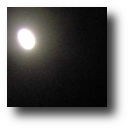 Clear Sky Detection experiment
Clear Sky Detection experiment
Here is an experiment to try to identify a clear sky using the SQM-LE/LU by observing the fluctuations in light level caused by clouds.
Details here.
|
 |
 A Survey of Light Pollution in Hong Kong.
A Survey of Light Pollution in Hong Kong.
Researchers at the Department of Physics of The University of Hong Kong completed their light pollution survey and collected near 2,000
night sky brightness data sets from SQMs at more than 220 observation sites
around Hong Kong during the past 15 months.
Full report here.
|
 |
 GLOBE at Night: Shed Light on Light Pollution!
Podcast.
Connie Walker of the NOAO discusses the Globe at Night project as part of the 365 days of astronomy during the Year of Astronomy.
GLOBE at Night: Shed Light on Light Pollution!
Podcast.
Connie Walker of the NOAO discusses the Globe at Night project as part of the 365 days of astronomy during the Year of Astronomy.
|
 |
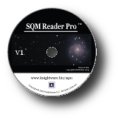 Knightware, makers of "Deep-Sky Planner", have released
SQM Reader Pro
for Windows and the SQM-LE. This low-cost package adds graphing, statistical
calculations, extended data storage and transmission capabilities to the
basic feature set of existing "SQM Reader" software.
Knightware, makers of "Deep-Sky Planner", have released
SQM Reader Pro
for Windows and the SQM-LE. This low-cost package adds graphing, statistical
calculations, extended data storage and transmission capabilities to the
basic feature set of existing "SQM Reader" software.
|
 |
|
|
 |
 A survey of light pollution in Hong Kong
using various tools including the Sky Quality Meter
A survey of light pollution in Hong Kong
using various tools including the Sky Quality Meter
|
 |
|
|
 |
|
 |
| Sky Quality Meter - LR |
"You've got to kick at the brightness 'til it bleeds starlight."
- with apologies to Bruce Cockburn
|
 |
An RS232 SQM model for night-time sky brightness monitoring!
An affordable meter for continual, connected measuring of sky brightness for astronomers!
The "Sky Quality Meter - LR" measures the brightness of the night sky in magnitudes per square arcsecond.
Designed by Dr. Doug Welch and Anthony Tekatch
|
Uses:
- Find out how good the night or site REALLY is.
- Compare the sky brightness at different sites quantitatively.
- Document the evolution of light pollution in your area.
- Set planetarium dome illumination to mimic the skies people are likely to experience elsewhere in the city.
- Monitor sky brightness through the night, night-to-night, and year-to-year.
- Determine which nights show the greatest promise for finding the 'faintest fuzzies'!
- Calibrate the effect of sky brightness on qualitative measures such as the Bortle Scale.
- Investigate how sky brightness correlates with the solar cycle and month-to-month sunspot activity.
- Help provide local ground truth for future sky brightness prediction with the Clear Sky Clock.
- CCD users can make a correlation between the SQM reading and when the background reaches some ADC level.
Deployment:
- Legacy computer interface installations.
- MODEM interface installations.
- Simple electronic interface projects.
Features:
- Sky brightness reported in visual magnitudes per square arcsecond.
- Infrared blocking filter restricts measurement to visual bandpass.
- Sensor temperature, model number, and serial number are provided.
- Precision readings at even the darkest sites.
- Field-upgradeable firmware.
- Open protocol document.
Specifications:
- RS232 connectivity
- Included applications for reading data in Perl.
- The Half Width Half Maximum (HWHM) of the angular sensitivity is ~10°. The Full Width Half Maximum (FWHM) is then ~20°. The sensitivity to a point source ~19° off-axis is a factor of 10 lower than on-axis. A point source ~20° and ~40° off-axis would register 3.0 and 5.0 magnitudes fainter, respectively.
Annotated FOV spec.
Comparison chart.
- Size 3.6 x 2.6 x 1.1 in.
- Maximum light sampling time: 80 seconds.
- Minimum light sampling time: 1 seconds.
- Specifications are subject to change without notice.
What you get:
 |
- SQM-LR unit
- SQM-LR users manual
- USB flash drive containing the users manual, operation software (UDM), and example software. This can also be found online.
- 6ft RS232 straight through cable
- International AC adapter
- Calibration sheet indicates unit serial number, and calibration values
|
|
Details:
Software Downloads:
|
 |
Reports including the SQM:
- Night Sky Photometry with Sky Quality Meter
by Pierantonio Cinzano.
- "Contributions of artificial lighting sources on light pollution in Hong Kong measured through a night sky brightness monitoring" article by
Chun Shing Jason Pun, Chu Wing So, Wai Yan Leung, Chung Fai Wong.
Science direct
arxiv.
- Human Contrast Threshold and Astronomical Visibility paper by Andrew Crumey.
- Report on sky colour: Red is the new black; Chris Kyba and colleagues
PDF.
- Documenting Local Night Sky Brightness report, Jennifer Birriel of MSU.
-
Measure Night Sky Brightness at Various Zenith Angles report, Jennifer Birriel of MSU.
- "Night sky photometry and spectroscopy performed at the Vienna University Observatory" published in the "Journal of Quantitative Spectroscopy and Radiative Transfer"
Science Direct
arXiv.
- "The night sky brightness at Potsdam-Babelsberg including overcast and moonlit conditions" published in the
"Journal of Quantitative Spectroscopy and Radiative Transfer"
Science Direct
arXiv.
- "Worldwide variations in artificial skyglow" by Christopher C. M. Kyba, Kai Pong Tong, and more.
Published in Nature.com : Scientific Reports.
- "Intercomparisons of Nine Sky Brightness Detector"
by Peter den Outer, Dorien Lolkema, Marty Haaima, Rene van der Hoff, Henk Spoelstra, and Wim Schmidt.
Published in 2014 The National Center for Biotechnology Information.
- Calibration of SQM-L photometers for the NixNox project,
Zamorano Calvo, Jaime and Munoz Marín, Victor Manuel (2010),
eprints.ucm.es/12262/
Zamorano, Jaime y Munoz Marin, Victor Manuel (2010),
Calibration of SQM-L photometers for the NixNox project. [ LICA report; no. #01],
eprints.ucm.es/12262/
- Zamorano, Jaime & Ruiz Carmona, Roque (2013),
Sky Quality Meter cross-calibration for the NixNox project. [ LICA report; no. #03],
eprints.ucm.es/18015/
- Nievas Rosillo, Miguel & Zamorano, Jaime (2014),
*PySQM the UCM open source software to read, plot and store data from SQM photometers*,
eprints.ucm.es/25900/
- Zamorano, Jaime, Sanchez de Miguel, Alejandro, Martinez Delgado, David & Alfaro Navarro,
Emilio (2011) Proyecto NixNox disfrutando de los cielos estrellados de Espana. Astronomia (142). pp. 36-42. ISSN 1699-7751,
eprints.ucm.es/24185/
- Zamorano, Jaime, Sanchez de Miguel, Alejandro, Nievas Rosillo, Miguel & Tapia Ayuga,
Carlos (2014) NixNox procedure to build Night Sky Brightness maps from SQM photometers observations.,
eprints.ucm.es/26982/
- "Initial Irish light pollution measurements and a new Sky Quality Meter-based data logger"
by B Espey, PhDa,b, and J McCauley, MSca.
Published on February 2014 vol. 46 no. 1 67-77.
Lighting Research and Technology.
- Excursion to Dark Sky Preserves in Canada 2015
by Andreas Hänel.
- SQM cross-calibration procedure by the BuioMetria Partecipativa team, 2011
PDF.
-
Poster on the BuioMetria Partecipativa project presented at the IAU 2012 General Assembly in Beijing.
- Dark box for low-light-level measurements of a camera using an SQM-LU PDF
by Peter Hiscocks.
- Integrating Sphere for Luminance Calibration PDF
by Peter Hiscocks.
- Birds advance their dawn chorus near airports
Report uses SQM to assist in determining bird chorus timing due to other effects. By Diego Gil et al.
- Comprehensive list of SQM related reports found on 2017-02-17.
-
Quantifying and Monitoring Darkness over the RAO (Rothney Astrophysical Observatory)
By Phil Langill and Benjamin George.
-
Temperature Stability of the Sky Quality Meter
By by Sabrina Schnitt, Thomas Ruhtz, Jürgen Fischer, Franz Hölker, Christopher Kyba.
- CoSQM - a color hack to the SQM-LE for Light At Night Sensing by Martin Aube
- Impact of Space Weather on the Natural Night Sky
Grauer, A. D., Grauer, P.A., Davies,N. and Davies, G. PASP Volume 131, Number 1005, November 2019
-
Central Oregon Skyglow Measurement Network by Bill Kowalik and Mike McKeag.
This report includes long term measurements and annotations plots of data logged Sky Quality Meter readings using the SQM-LU-DL in dark sky areas. Updated August 16, 2022
- Measurements of sky brightness at Bosscha Observatory, Indonesia
by D. Herdiwijaya and others. This report includes long-term light pollution studies using SQM meters from 2011.
- Linking solar minimum, space weather, and night sky brightness
Albert D. Grauer, Patricia A. Grauer, Nature Scientific Reports (2021) 11:23893.
- Video: Creating a Dark Sky Place - Mayo Dark Sky Park Guests for Heritage Week 2021
Anthony Tekatch answers questions about the Sky Quality Meter, specifically setting up the data-logging model.
- Video: Doug Welch discusses The Life and Times of the Sky Quality Meter (SQM) - Feb 21, 2022
- Allsky and SQM movie (overcast night) ,
Allsky and SQM movie (clear night)
by Bill Kowalik
- Drivers of artificial light at night variability in urban, rural and remote areas
by Luciano Massetti
- NSKY-CD: A System for Cloud Detection Based on Night Sky Brightness and Sky Temperature
by Luciano Massetti, Alessandro Materassi and Francesco Sabatini/li>
- Monitoring Light Pollution with an Unmanned Aerial Vehicle (UAV): A Case Study Comparing RGB Images and Night Ground Brightness
by Luciano Massetti 1, Marco Paterni 2, and Silvia Merlino
- Sky Brightness and Cloud Cover at Several Locations Across Missouri
by Vayujeet Gokhale and Andrew Gentry of Truman State University & University of New Mexico
- DarkSkyLab Ninox light pollution network resources
- Towards an absolute light pollution indicator
by Philippe Deverchère, Sébastien Vauclair, Gonzague Bosch, Sylvain Moulherat & Jérémie H. Cornuau
- Multi-faceted light pollution modelling and its application to the decline of artificial illuminance in France
by Rolf Buhler, Philippe Deverchère, Christophe Plotard, Sébastien Vauclair
Light pollution maps / databases:
Useful Light pollution links:
|
|
SQM tripod adaptor option |
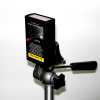
SQM example |
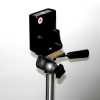
SQM-L example |
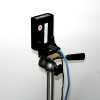
SQM-LE example |
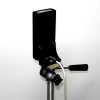
SQM-LU-DL example |
This adaptor kit was designed to fit the SQM, SQM,L,LU,LE,LR,DL. The battery compartments in the handhelds meters is accessible with the adaptor in place.
The adaptor screws into the back of the meter and allows the meter to be mounted on a tripod with a 1/4-20 thread.
The kit includes one tripod adaptor, 3D-printed black or white plastic adaptor,
and two longer screws (to replace two short screws already in the meter).
3D part view
|
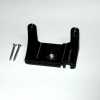
SQM-x-TA Kit |
| Price $20USD |
|
|
Sky Quality Meter - Window mount |
 Example
Example
|
This Window mounting bracket is used for moving light pollution studies while a "connected" meter and GPS are attached
to a computer using UDM logging the continuously with GPS option enabled described at this
forum post.
Read more details here.
|
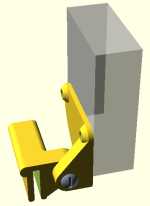
SQM-WM Kit
|
|
|
|
|
| Buy now: | | Price $218US plus Shipping & Handling. |
|
 |
|
You may also be interested in; the SQM-LE/LU housing, or our low-cost handheld sky meter (SQM),
or our narrow-field handheld sky meter (SQM-L),
or our Ethernet conected sky meter (SQM-LE).
|
 |
| Compare models. |
 |
|
Ready to buy?
|
Price $218US plus Shipping & Handling.
Dealers
|
 |
|

